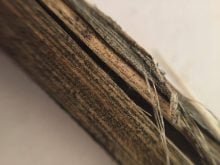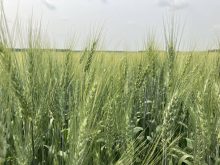A big step to improve yield in canola comes down to managing the major “yield robbers” — diseases, weeds and insects.
Pest management begins with regular scouting. In a survey of 1,000 canola growers last year, the Canola Council of Canada (CCC) learned 45 per cent of those surveyed scout their fields at least once a week. CCC agronomy specialists would like to see that number closer to 100 per cent because pest issues can flare up quickly and timely management is key.
Pest management is the bread and butter of the CCC’s Canola Watch emails, which provide timely agronomy tips weekly throughout the growing season. The emails also include a quiz to add a little fun to the learning process. To continue that theme, here are four quiz questions to test your knowledge on yield robbers. Answers are provided at the end of the article.
Read Also

Cancer agency reclassifies another herbicide ‘probably carcinogenic’
The WHO’s cancer research agency has now put atrazine, a herbicide well known to corn growers, in the same potential-hazard category where the agency put glyphosate.
Question 1. The pre-seed window is a critical time to control kochia as 80 per cent of kochia seedlings emerge before the crop. Because all kochia populations in Western Canada are considered resistant to ALS inhibitors (Group 2) and many have resistance to glyphosate, dicamba and/or fluroxypyr, a tank mix is highly recommended. When targeting kochia, which is a recommended tank mix for pre-seed glyphosate?
A. Group 1 clethodim
B. Group 3 trifluralin
C. Group 6 bromoxynil
D. Group 14 carfentrazone
Question 2. Hot weather can reduce insecticide performance. For example, the label for the pyrethroid Decis (active ingredient deltamethrin) says, “Do not spray under a strong temperature inversion, or when temperature exceeds ______ as this will result in a reduction in control.”
A. 25 C
B. 31 C
C. 34 C
D. 37 C
Question 3. The CCC’s Canola Research Hub report for a recently completed study called “Validation of lygus and other insect pest thresholds in commercial farms throughout Alberta,” says the main accomplishment of this study is the validation of a new threshold for lygus in canola of ______ lygus per sweep.
A. 1
B. 2-3
C. 5-10
D. 10-20
Question 4. Blackleg infection that occurs at this crop stage is more likely to cause yield loss. What is the stage?
A. Cotyledon to four-leaf
B. Six-leaf to bolting
C. Bud to flowering
D. Late flowering to pod
Focus time and inputs
Canola growers can find all kinds of things in their fields that affect yield. The key is to focus time and inputs on the most important yield loss factors. Scout each field regularly to see what pests are likely to cause the greatest loss. If sprays are necessary, check labels for rates, timing, water volumes, tips to improve efficacy and pre-harvest intervals.
An important consideration for any insect spray decision is the economic threshold. This is the point at which insect damage will start to cause economic loss. By spraying only when pest numbers exceed the thresholds, growers eliminate the cost of unnecessary sprays and protect the large population of beneficial and non-pest insects also present in their fields.
The Canola Encyclopedia has detailed information on all major diseases, weeds and insects of canola, including scouting and management tips unique to each of them.
Canola Watch also has timely tips based on field observations across the Prairies each week through the growing season. Sign up for the email updates at canolawatch.org.
Quiz answers: 1 (D), 2 (A), 3 (B), 4 (A)
















